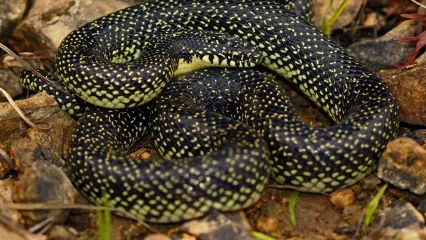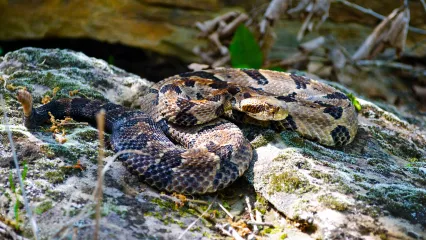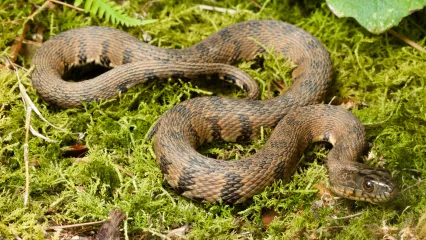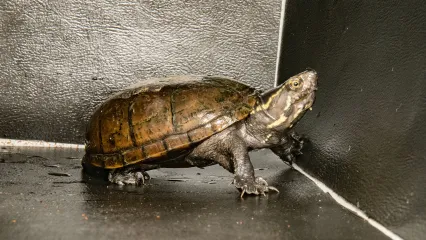
Description
Sometimes referred to as the common kingsnake, the speckled kingsnake is a moderately large snake with smooth scales and a background color of black. Each scale has an irregular yellow marking that varies in size and shape giving the snake an overall speckled appearance. The belly is highly variable, but is usually black often with irregular yellow to cream-colored markings. Juveniles, and some adults appear blotched because the density of yellow markings on dorsal scales is distributed such that a series of black blotches are evident along the top of the body. In the eastern United States, this species is a banded snake or blotched snake. The anal plate is not divided.
Size
Speckled kingsnakes vary in size from about eight inches as hatchlings to at least 72 inches as large adults. Typical adult size is 36 to 48 inches.
Habitat
The distribution in Oklahoma is nearly statewide. The distribution of a number of subspecies ranges west to east from the west coast to southern New Jersey and north to south from southwest Oregon to the tip of Florida and into Mexico.
Life Cycle
Speckled kingsnakes are active from spring through late fall. During these times, these kingsnakes are primarily active during the day but as temperatures increase in summer they are active at dusk and at night. They occur in nearly all habitats, from riparian forests to open prairie. Mating occurs from March through May, and females likely deposit eggs in late May and June. Hatchlings appear in August and September. Number of eggs varies from about six in small females to at least 23 in large females. Speckled kingsnakes eat a remarkable diversity of prey including small mammals, birds, frogs, lizards, reptile eggs, and other species of snakes. Although speckled kingsnakes are often referred to as “cannibalistic,” they typically do not eat other speckled kingsnakes. These snakes are best known for their ability to eat large snakes, including venomous species such as western massasaugas and prairie rattlesnakes. A speckled kingsnake can eat snakes as long or longer than they are. Speckled kingsnakes are harmless to humans.
How To Observe
During spring, speckled kingsnakes can often be found under surface objects, particularly pieces of tin and boards but also under flat rocks. Like many other snake species, speckled kingsnakes gain heat by having their bodies in contact with surface objects exposed to direct sunlight while safely hidden underneath of them. Speckled kingsnakes can also be observed while they are active during the day in spring and fall, but they are difficult to find. The best way to observe speckled kingsnakes during late spring, summer and early fall is by driving roads early in the evening and after dark. They frequently “bask” on warm roads just before and after dark in spring and fall and cross roads in summer. When handled these snakes usually don’t bite, but they do release a very foul-smelling liquid from glands in the cloaca.
(This profile was created by Dr. Laurie Vitt as part of a partnership between the Wildlife Department and the Sam Noble Oklahoma Museum of Natural History. It was funded as part of a larger State Wildlife Grant to survey and inventory amphibians and reptiles of the Wildlife Management Areas of Oklahoma: T-35-P-1.)


